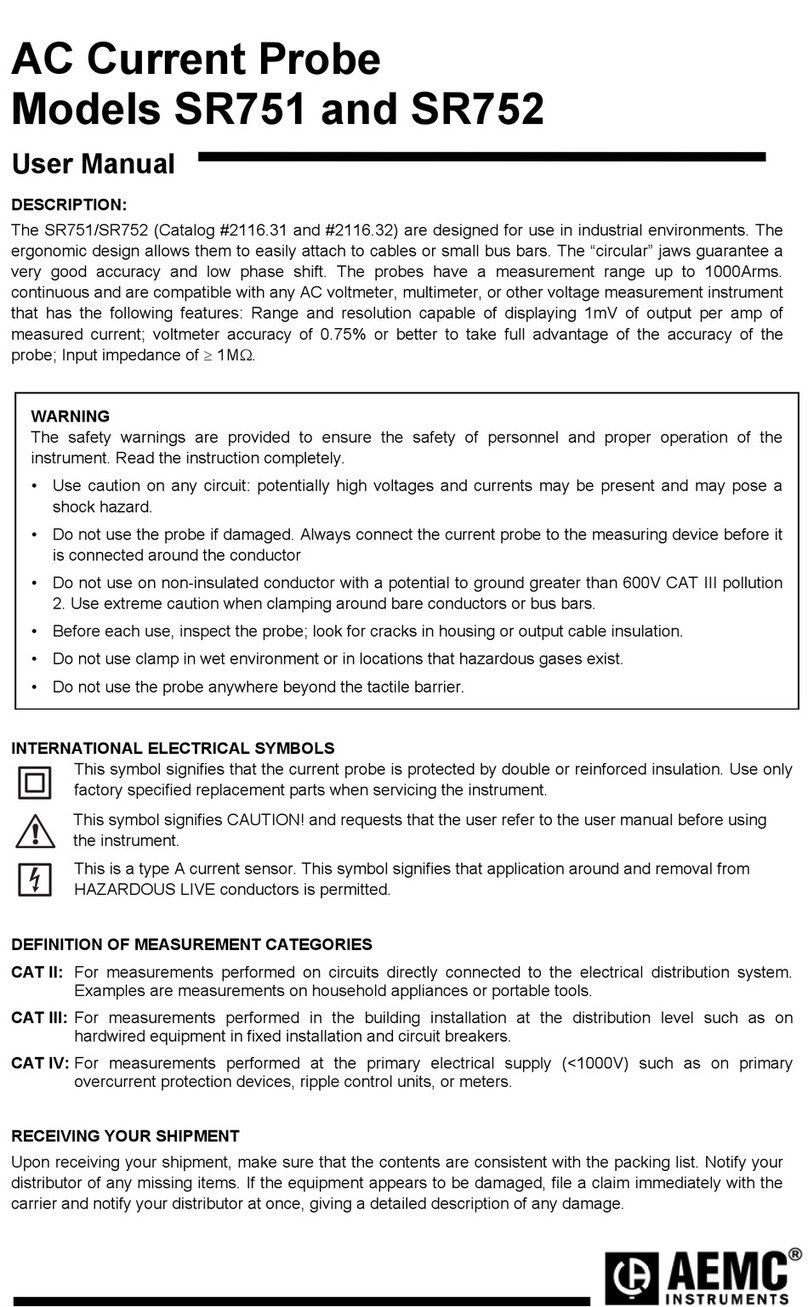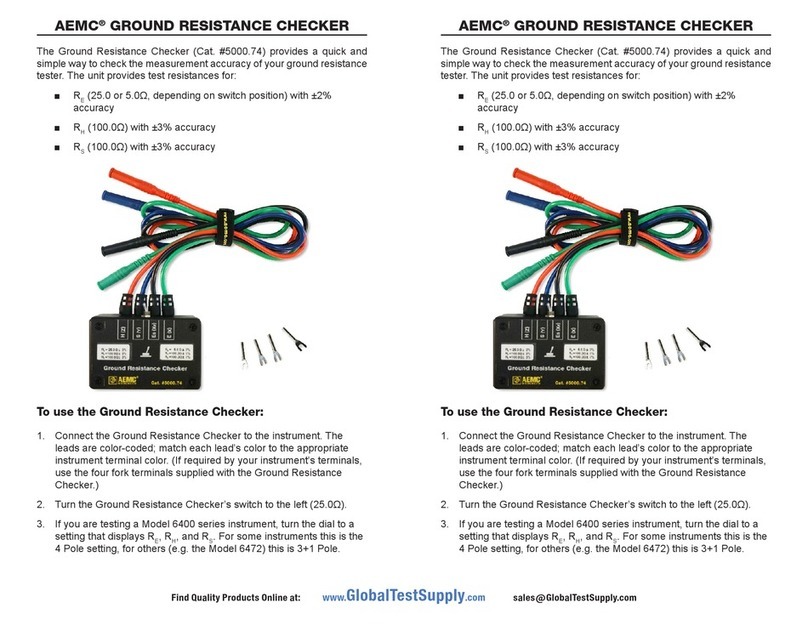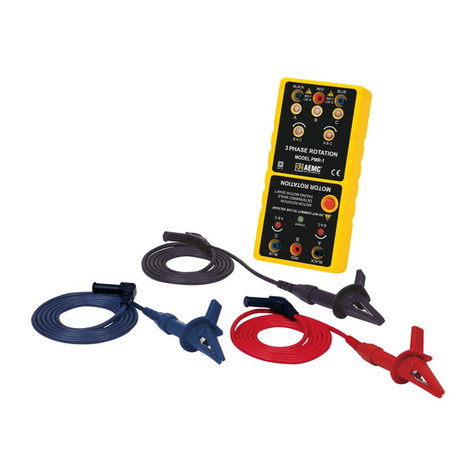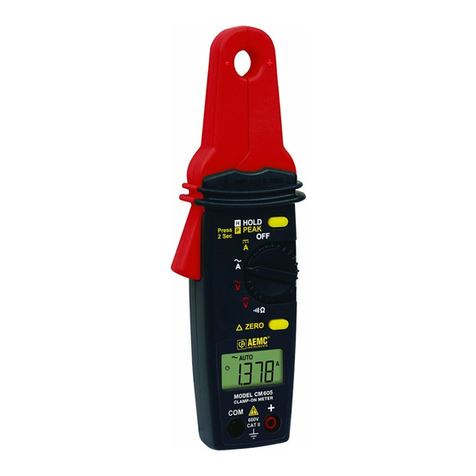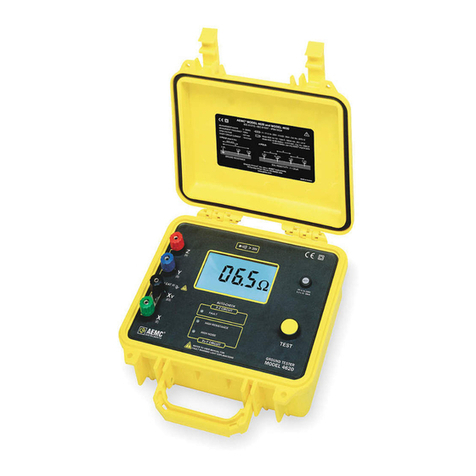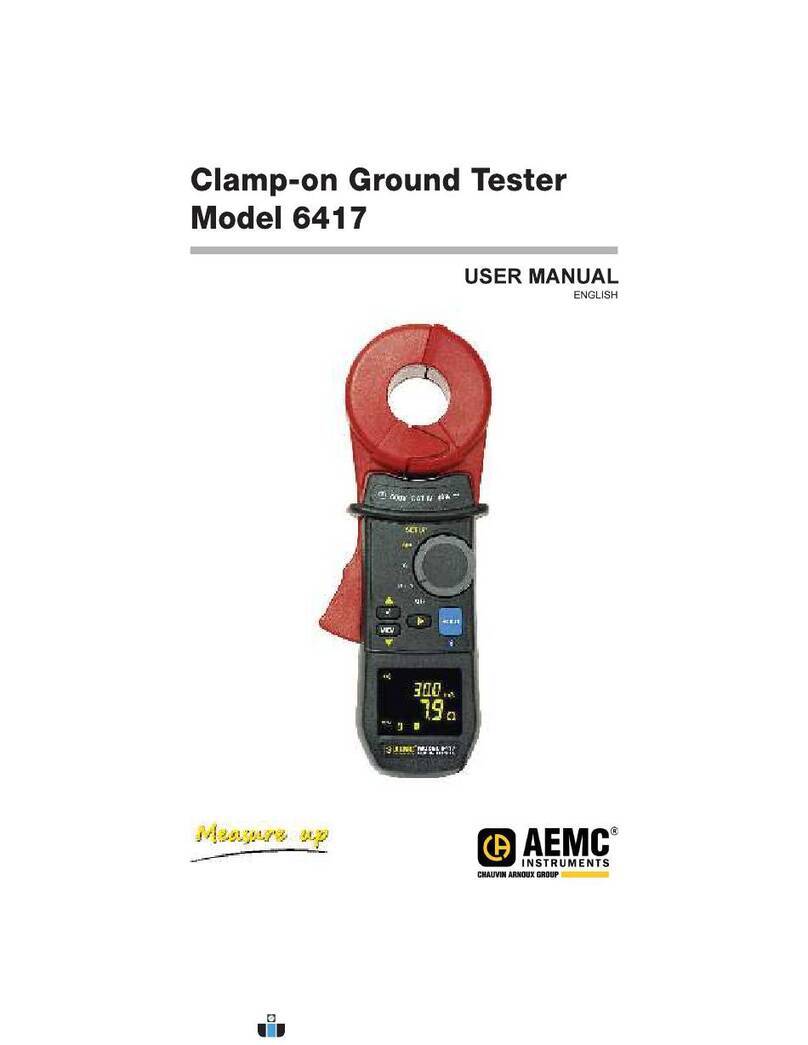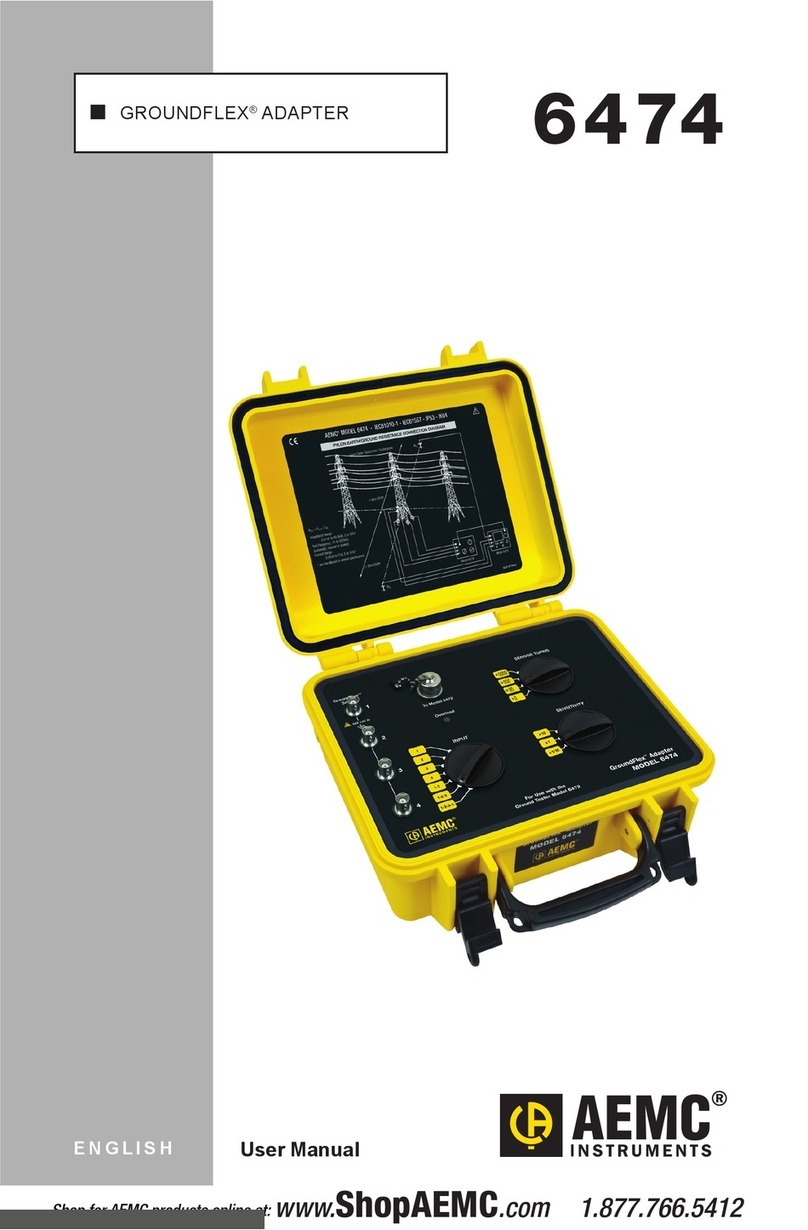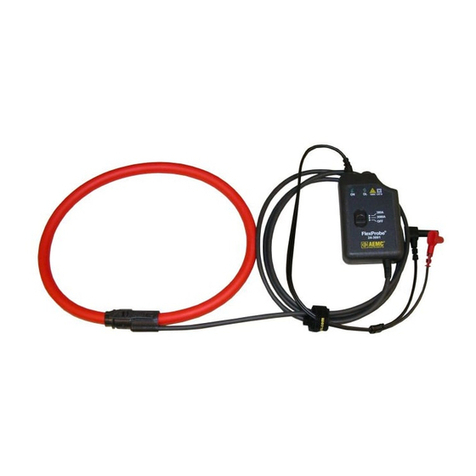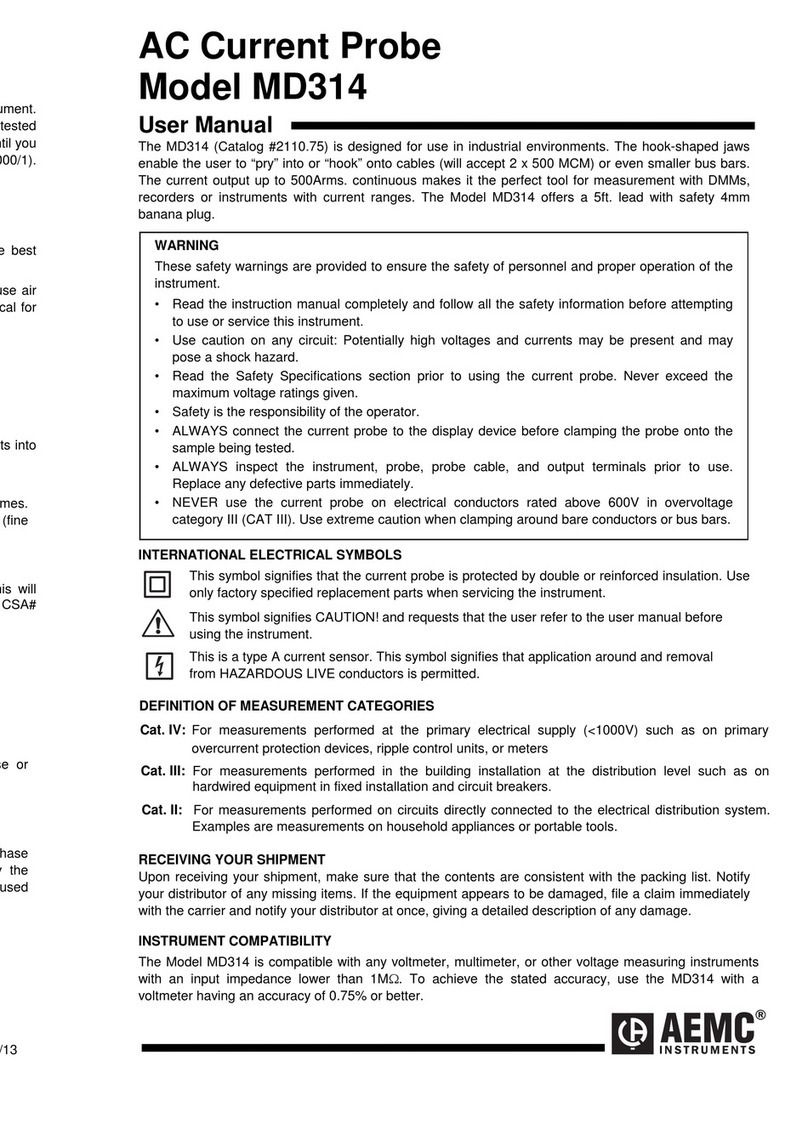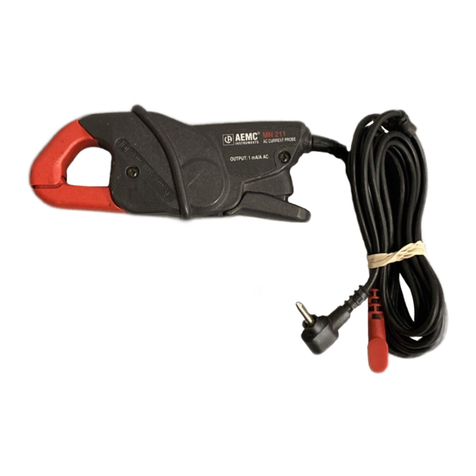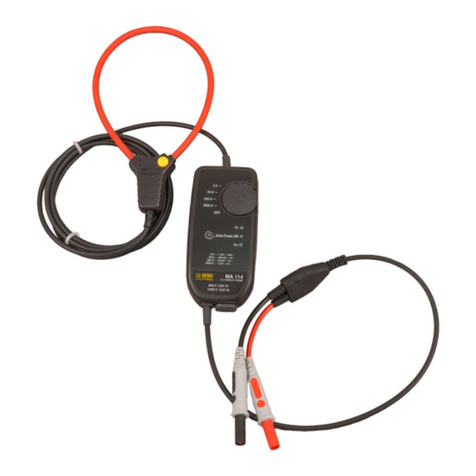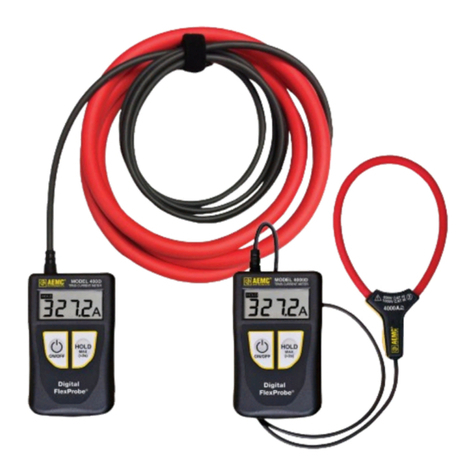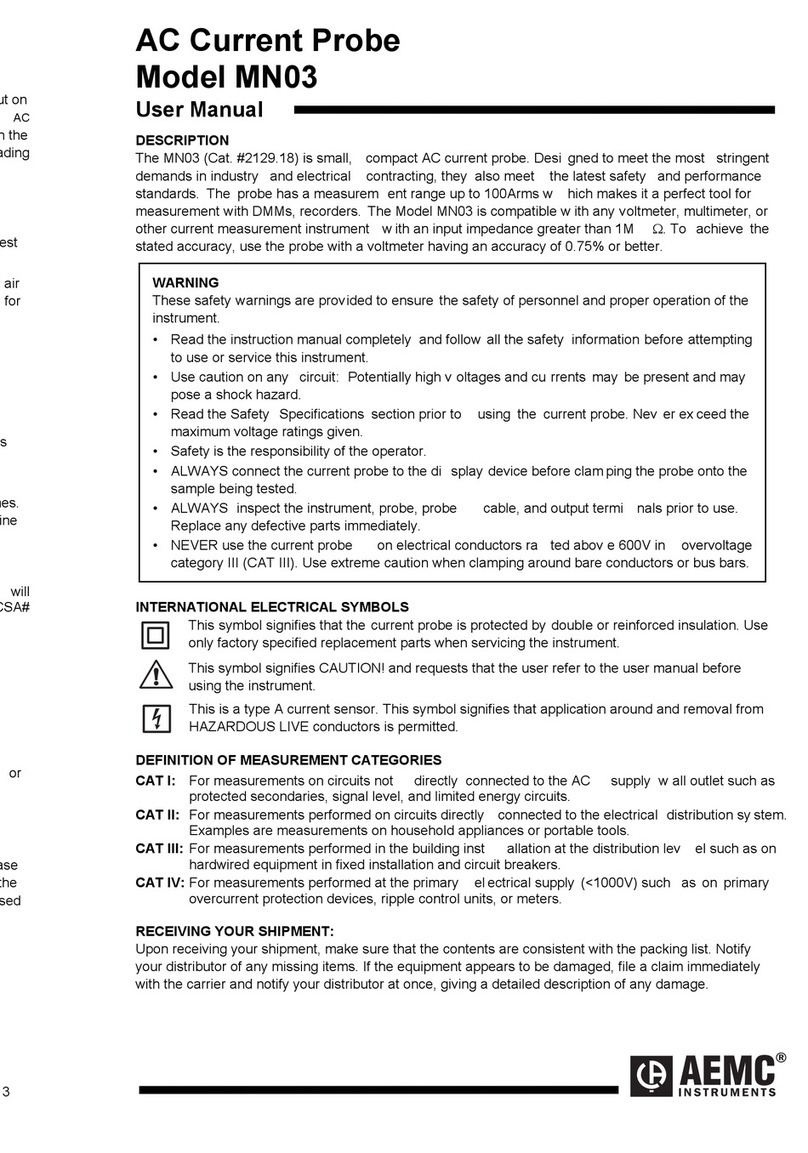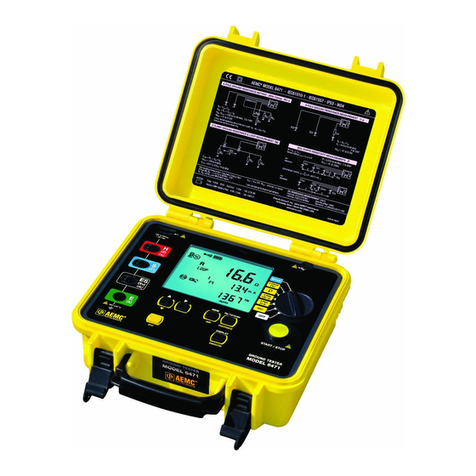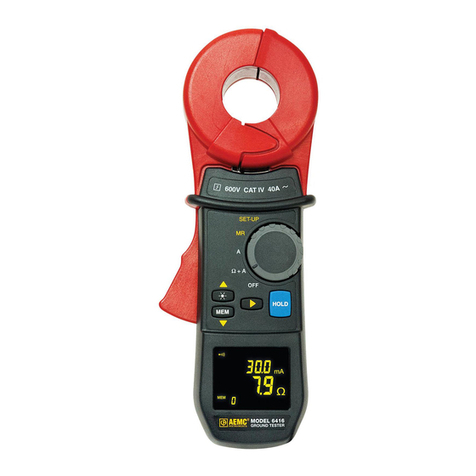
Ground Resistance Tester Model 3620
5
1.4 Ordering Information
Ground Resistance Tester Model 3620............................ Cat. #2114.90
Includes soft carrying case, batteries and a user manual.
Ground Resistance Tester Model 3620 Kit (150 ft) ......... Cat. #2135.10
Includes ground tester, two 150 ft color-coded leads on spools (red/blue), one 30 ft lead
(green), two T-shaped auxiliary ground electrodes, set of 5 spaded lugs, one 100 ft AEMC®
tape measure, batteries, carrying bag, user manual and warranty card.
Ground Resistance Tester Model 3620 Kit (300 ft) ......... Cat. #2135.11
Includes ground tester, two 300 ft color-coded leads on spools (red/blue), two 100 ft color-
coded leads (hand tied-green/black), four T-shaped auxiliary ground electrodes, set of 5
spaded lugs, one 100 ft AEMC®tape measure, batteries, carrying bag, user manual and
warranty card.
Ground Resistance Tester Model 3620 Kit (500 ft) ......... Cat. #2135.11
Includes ground tester, two 500 ft color-coded leads on spools (red/blue), two 100 ft color-
coded leads (hand tied-green/black), one 30 ft lead (green), four T-shaped auxiliary ground
electrodes, set of 5 spaded lugs, one 100 ft AEMC®tape measure, batteries, carrying bag,
user manual and warranty card.
1.4.1 Kits, Accessories and Replacement Parts
Test Kit for 3-Point Testing (150 ft) .................................. Cat. #2135.35
Includes two 150 ft color-coded leads on spools (red/blue), one 30 ft lead (green), two T-
shaped auxiliary ground electrodes, set of 5 spaded lugs, one 100 ft AEMC®tape measure,
carrying bag.
Test Kit for 4-Point Testing (300 ft) .................................. Cat. #2135.36
Includes two 300 ft color-coded leads on spools (red/blue), two 100 ft color-coded leads
(hand-tied, green/black), four T-shaped auxiliary ground electrodes, set of 5 spaded lugs,
one 100 ft AEMC®tape measure, carrying bag.
Test Kit for 4-Point Testing (500 ft) .................................. Cat. #2135.37
Includes two 500 ft color-coded leads on spools (red/blue), two 100 ft color-coded leads
(hand-tied, green/black), one 30 ft lead (green), four T-shaped auxiliary ground electrodes,
set of 5 spaded lugs, one 100 ft AEMC®tape measure, carrying bag.
Test Kit for 3-Point Testing (Supplementalfor4-PointTesting)... Cat. #2135.38
Includes two 100 ft color-coded leads (hand-tied, green/black), one 30 ft lead (green), two
T-shaped auxiliary ground electrodes, set of 5 spaded lugs, one 100 ft AEMC®tape measure,
carrying bag.
25W Calibration Checker................................................... Cat. #2130.59
Tape Measure – AEMC 100 ft ............................................ Cat. #2130.60
Ground Tester Video/Workbook Set ................................ Cat. #2130.64
Set of 2, T-Shaped Auxiliary Ground Electrodes............ Cat. #2135.39
Fuse – Set of 5, 0.1A, >250V, 0.25 x 1.25"........................ Cat. #2970.12













